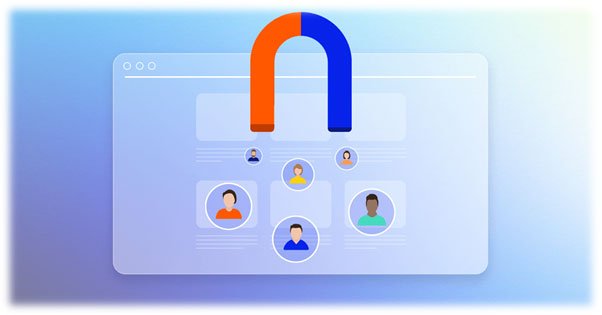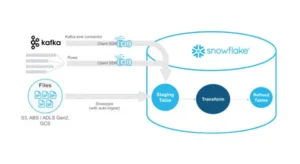
Addressing Customer Churn in SaaS: Effective Practices for Enhancing Retention and Sustained Growth
Leveraging CRM for Efficient User Management and Enhanced Customer Relationships
Customer churn is a serious problem for software-as-a-service (SaaS) companies, where recurring revenue is essential to success. Churn reduces revenue and stunts growth because acquiring new customers costs far more than keeping existing ones. Thus, sustaining growth in the SaaS industry requires improving customer retention and minimizing churn.
This article explores best practices that SaaS companies can implement to address customer churn, enhance retention, and maintain sustained growth.
Understanding Customer Churn in SaaS
Customer churn is the percentage of customers who discontinue using a business’s services over a certain time frame. Churn is especially bad for the SaaS industry, as subscriptions are the main source of revenue. High customer churn rates are a sign of discontent or a lack of value in the eyes of the customers, which can lower revenue and harm a company’s standing in the market.
There are two kinds of churn: involuntary and voluntary.
When consumers voluntarily decide to discontinue their subscriptions, it’s known as voluntary churn. This happens when they are unhappy, think their subscriptions are not worth the money, or find better options elsewhere. Conversely, involuntary churn occurs as a result of events beyond the customer’s control, such as credit card expiration or failure to make payments. To reduce both kinds of churn, it’s essential to tackle them effectively and minimize their impact on the business.

Best Practises for Enhancing Retention and Sustained Growth

Improving Onboarding Process

An important part of the customer journey is the onboarding process. It establishes the tone for the client-service relationship as a whole. A smooth, informative, and engaging onboarding process makes it easier for users to see the product’s benefits right away, which may drastically lower the likelihood of early churn.
To enhance the onboarding process:
- Personalization: Adapt the onboarding process to the unique requirements of various customer segments. This may entail targeted communication, tailored information, and individualized instruction.
- Guided Tours and Tutorials: To assist users in navigating the platform and comprehending its primary features, offer interactive tutorials and step-by-step directions.
- Proactive assistance: During the onboarding process, provide proactive assistance to address any issues or queries immediately. Examples of this include live chat or dedicated onboarding specialists.
Regular Customer Engagement

To keep customers interested and make sure they keep getting value out of the service, engagement is essential. Regular interaction can fix any problems before they cause churn and assist in promoting the product’s advantages.
- Email Campaigns: Targeted email campaigns may be used to inform customers about new features, highlight customer successes, and give tips on how to get the most out of the product.
- In-app Messaging: Use in-app messaging to share updates, reminders, and tips with users right within the app to keep them engaged and connected.
- Webinars and Workshops: To educate customers about the latest innovations and industry best practices, regularly host webinars and workshops. This enhances the product’s value and helps to build a community around it.

Monitoring Customer Health Scores
A predictive metric called customer health scores can be used to identify customers who are at risk of churning. SaaS companies may take proactive steps to retain customers before they decide to leave by keeping an eye on their health.
- Usage Analytics: Monitor the frequency of platform usage and the features that users interact with the most. A decrease in use may be a sign of dissatisfaction.
- Customer feedback: Frequently ask for feedback via surveys and face-to-face interactions. Gaining insight into customer opinions may be quite helpful in identifying any churn risks.
- Account Management: If internal teams lack the bandwidth to analyze and act on these signals effectively, it may be worthwhile to hire SaaS experts who specialize in customer lifecycle management.
Offering flexible Pricing Models

One important aspect of retaining customers is pricing. By making the service more accessible and affordable, offering flexible pricing models that align with customer needs and usage patterns helps lower churn.
- Usage-based price: Implement a pricing structure that is based on actual usage of the platform, and charge them accordingly. This method works especially well for customers whose needs change over time.
- Tiered Pricing: Offer different pricing tiers with varying levels of features and support. Customers are less likely to leave because of cost concerns when they select a plan that best suits their needs and budget.
- Freemium Model: Consider providing a freemium version of the product, in which users can get the most basic functions without charge and subscribe to a premium plan to access more features. This can help retain customers who might otherwise churn due to cost.
Enhancing Product Value

- Regular Updates: Provide regular updates to address bugs, improve current features, and add new ones. This shows a dedication to offering value and maintaining the product’s relevance.
- Customer-Driven Development: Ask users for feedback on new features and improvements to include them in the product development process. This ensures that the product will develop to suit their demands.
- Competitor Analysis: To maintain this momentum without overwhelming internal teams, many businesses choose to hire SaaS experts who bring specialized product insight and industry knowledge.
Provide Excellent Customer Support

- 24/7 support: Regardless of time zones or business hours, provide 24/7 support to customers to address their issues as they come up.
- Multichannel support: To cater to varying customer preferences, offer help across a variety of channels, such as chat, email, phone, and social media.
- Self-Service Options: Provide a thorough knowledge base, frequently asked questions, and video tutorials so that users may solve problems without assistance, cutting down on the requirement for in-person assistance.
Addressing Involuntary Churn

- Payment Reminders: Before a customer’s payment method fails or expires, send them automatic reminders.
- Grace Periods: Give customers a grace period to change their payment details before terminating their memberships.
- Dunning Management: Retrying failed transactions and providing substitute payment options as part of a dunning management process to handle failed payments.
Conclusion
- To effectively handle customer churn in SaaS, a variety of tactics focused on value delivery, customer experience, and engagement are needed.
- SaaS organizations may drastically lower churn rates and promote sustainable growth by optimizing onboarding processes, regularly interacting with customers, monitoring customer health, providing flexible pricing, enhancing product value, giving excellent support, and addressing involuntary churn.
- The key is to approach churn reduction as a continuous process of comprehending and satisfying customer needs rather than as a one-time activity.
- SaaS businesses may create lasting relationships with customers by taking a proactive approach, which will ensure their success in an increasingly competitive market.
If you’re ready to embark on this journey and need expert guidance, subscribe to our newsletter for more tips and insights, or contact us at Offsoar to learn how we can help you build a scalable data analytics pipeline that drives business success. Let’s work together to turn data into actionable insights and create a brighter future for your organization.

Open AI GPT4 Oil Gas
How OpenAI GPT-4.5 Integration Is Changing Oil & Gas Operations In the past year, GPT-4.5 has evolved beyond chatbots and entered the world of heavy industry. For oil & gas

How LLMs Are Revolutionizing Text Mining and Data Extraction from Unstructured Data
Leveraging LLMs for Advanced Text Mining and Data Extraction from Unstructured Data Since digital transformation is growing exponentially, businesses generate huge amounts of unstructured data from sources like emails, PDFs,

How Businesses Use LLMs for Competitive Intelligence to Stay Ahead of the Curve
How Businesses Use LLM’s for Data-Driven Competitive Intelligence to stay ahead of the curve Competitive intelligence (CI) is essential for keeping a competitive edge in today’s fast-paced business world. Businesses

Maximizing Cost-Efficient Performance: Best Practices for Scaling Data Warehouses in Snowflake
Maximizing Cost-Efficient Performance: Best Practices for Scaling Data Warehouses in Snowflake Organizations rely on comprehensive data warehouse solutions to manage substantial volumes of data while ensuring efficiency and scalability. Snowflake,

Comprehensive Guide to Implementing Effective Data Governance in Snowflake
Mastering Data Governance with Snowflake: A Comprehensive Guide Data governance is a systematic way to manage, organize, and control data assets inside an organization. This includes developing norms and policies

Efficiently Managing Dynamic Tables in Snowflake for Real-Time Data and Low-Latency Analytics
Managing Dynamic Tables in Snowflake: Handling Real-Time Data Updates and Low-Latency Analytics In this data-driven environment, businesses aim to use the potential of real-time information. Snowflake’s dynamic tables stand out
